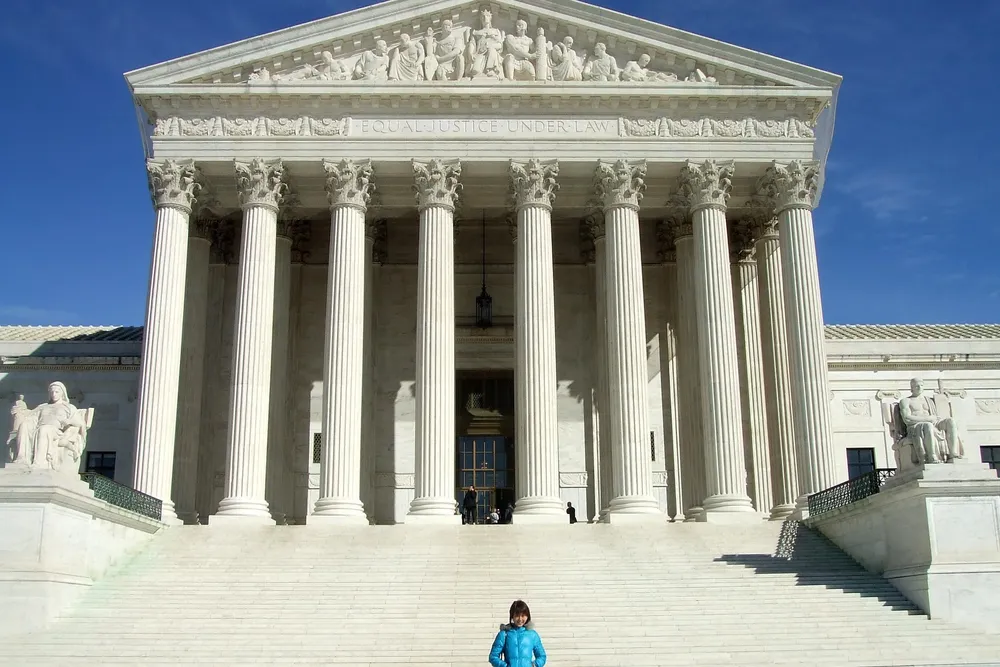US offshore wind can 'absolutely' prevail over litigation following Supreme Court ruling
Unanimous decision requires the judiciary to defer to federal agencies on the scope and content of environmental reviews, bolstering project defences and easing permitting

The case pitted environmentalists against federal regulators who approved an 88-mile railway extension to connect the remote Uinta Basin in Utah to the interstate rail network.
As the line would enable crude oil to be transported to refineries more easily, opponents said the project’s Environmental Impact Statement (EIS) should have accounted for the consequent upstream and downstream emissions.
The District Court for the District of Columbia ruled against the plaintiffs but were reversed on appeal before the case was selected by the Supreme Court.
There, in a unanimous decision (with one abstention), the court agreed with justice Brett Kavanaugh that under the National Environmental Policy Act (NEPA), courts must afford federal agencies “substantial judicial deference” on the scope and contents of their EIS and don’t need to consider actions that are “separate in time or place” from the proposed project.
The ruling could have major impacts on energy project permitting and litigation as the EIS process is a chronic source of legal jeopardy.
Offshore wind is chiefly regulated by the Bureau of Ocean Energy Management (BOEM) in collaboration with multiple other federal agencies.
“By requiring substantial deference to BOEM’s NEPA analyses, this decision will absolutely make it easier for the government and developers to prevail on NEPA claims,” said Josh Kaplowitz, counsel at law firm Troutman Pepper Locke.
Cumulative impacts claims “are particularly likely to fail, given that agencies are no longer required to analyse the effects of projects occurring in a different time and place as the project at issue,” he added.
NEPA jeopardy
NEPA was passed in 1970 to put a check on rampant post-war infrastructure buildout that left massive environmental degradation in its wake by requiring that federal agencies consider the consequences of project development as well as alternatives.
Amid rising litigation in the 1970s, however, initially spare environmental reviews ballooned into massive and expensive tomes as agencies sought to bullet-proof their approvals from legal challenges.
“They don’t investigate just the reasonable alternatives. They investigate stupid ones, too, in case a judge later says that the agency really ought to have looked into one of them.”
In his opinion, justice Kavanaugh wrote that NEPA has transformed from a modest procedural requirement “into a blunt and haphazard tool employed by project opponents (who may not always be entirely motivated by concern for the environment) to try to stop or at least slow down new infrastructure and construction projects.”
Many of the lawsuits facing offshore wind are supported by conservative groups funded by fossil fuel interests such as the Heartland Institute and Caesar Rodney Foundation.
Lawyers debate the impact of this ruling on several accounts, though.
Offshore wind impacts
“The impacts are not as broad as people expect, because... this was a fairly specific ruling with respect to the actual project at hand and the exhaustive process that took place here,” said Andrew Levine, co-chair of environmental practice at Philadelphia-based law firm Stradley, Ronon, Stevens & Young.
The EIS put together by federal regulators for the rail line in question exceeded 3,000 pages.
But “that doesn't mean that there may be other scenarios in which there's gross deficiencies and you can still litigate that,” he said, adding: “There's deference, but deference is not absolute.”
Litigation facing offshore wind projects also typically involves multiple federal laws beyond NEPA, including the Marime Mammal Protection Act and the National Historic Preservation Act that were not covered by the ruling.
Moreover, as law firm Troutman noted in a memo, the lenient language in the ruling “leaves open the possibility that agencies in a future administration could choose to draft broader EISs that do consider upstream and downstream projects.”
The Trump administration is currently engaged in sweeping revisions of NEPA and other environmental regulations that could potentially be applied to approved offshore wind arrays.
“Anytime you have an EIS and it's five years or over, the agencies will take a new look at it,” said Levine, adding: “All issues are on the table again.”